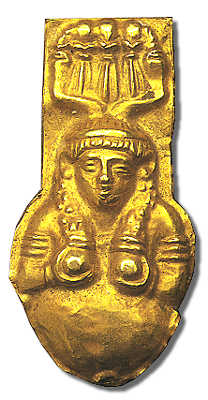
It's impossible to say that Cagliari was founded by any particular nation or that
its origin is tied to any one civilization. Favored by the shape of its coastline,
the Gulf of Cagliari became the entry point for the Phoenicians who began to build
trading settlements on the promontory of S. Elia and near the S. Gilla lagoon in the 8th century
BC. These temporary, sporadically inhabited settlements lacked the urban structure
provided later by the Carthaginians, when Cagliari began to take on the semblance
of a city.
Numerous artifacts date from the Punic era and evidence various activities; of particular
interest are religious artifacts such as the small terra-cotta votive figures from
S. Gilla and the necropolis (tombs) of Tuvixeddu in the S. Avendrace district. The
preference for building on level, low-lying land and lower hill slopes leads us to
believe that Castello did not function as an actual acropolis during the Carthaginian
dominion.
The transfer of Sardinia from Carthaginian to Roman rule (238 BC.) marked a profound
change in the shape of the city.
The Romans continued to use most of the existing
Carthaginian construction and added other important works such as the amphitheater
and the Tigellio Villa, in the homonymous street. The Marina district was transformed into
a fortified military encampment (castrum).
During the Roman period, Cagliari became a true city with a regular water supply,
pedestrian walkways, town squares, paved roads, warehouses for salt and grain, and
new necropolises. The Romans imitated the Carthaginian plan for the city's development
and avoided building on the steeper hills. Expansion continued along the coast, with little
penetration inland.
Today's capital, which at the time had about twenty thousand inhabitants, was reconfirmed
as the gateway to Sardinia with the diffusion of Christianity, which arrived along
the trade routes from northern Africa. The spread of the new religion continued during Vandal and Byzantine domination, as well as during the repeated and ferocious
Arab raids in 1015-16.
In time, Byzantine rule lost hold on the area and power passed from the hands of the
Byzantine magistrates to the local rulers (Giudicato),
who formally and legally declared independence from mainland Byzantine rule. For defensive
purposes, the Cagliari Giudicato did not choose the city as its government seat,
which was transferred outside Cagliari and, in particular, to S.Igia, near the marsh of the same name. The decline of the city in this period was serious and extensive.
|







